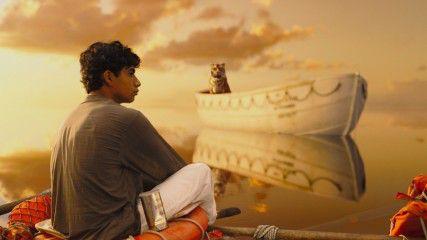Director Ang Lee brought Life of Pi to screens with artful direction and a level of sophistication necessary to properly illustrate the complex plot of Yann Martel’s novel. Everything in the film, down to the opening credit sequence, toes the line between too much and just enough. It seems to be almost requisite among directors of potentially-epic films these days to opt for 3D technology, and the result can either be beautiful or tragic—the former in the case of Pi.

The film tells the story of an adolescent boy, Pi (Suraj Sharma), uprooted from his native land right in the midst of an important spiritual journey—one that is furthered after a shipwreck that leaves Pi stranded in the Pacific on a lifeboat in the company of a fully grown Bengal tiger. Throughout his journey on the ocean, he is forced to question everything he thought he knew about life and the way it works.
Viewers accompany this young boy on a journey that raises many internal questions. One thing that remains unquestionable, though, is that the execution with which Lee has used in translating the film from pages to big screen is close to flawless.
Casting directors did a phenomenal job finding actors and actresses that are relatively unknown, leaving much room for audiences to appreciate the story for its depth and visual beauty. Although this is a film, it acts surprisingly like a novel in that all preconceived notions are made virtually impossible from the beginning. Ayush Tandon, who plays the child Pi, puts on an extremely accurate performance, translating the role from page to film in a way that is both moving and exciting.
Film composer Mychael Danna has discovered a way to mix the cultural sounds of India with both mellow tunes for the film’s lighter moments and more intense melodies for the heavier scenes. It comes as no surprise that the score mirrors the beauty of the filmmaking.
The stellar 3D technology brought an element of realism to a tale that seems logistically impossible. Having to virtually generate a main character into the film post-production seems daunting, and yet the appearance of the tiger, Richard Parker, comes off as eerily accurate. Everything down to the movements of his backbones and the twitches of his whiskers were crafted to perfection.
Audience members will not be disappointed with Life of Pi in any way, whether they have read the book or not. The film has something to offer for everyone, and excludes no one. Ang Lee will have you asking yourself questions you never thought to ask right up until the penultimate twist at the end.
This is an account occasionally used by the Daily Free Press editors to post archived posts from previous iterations of the site or otherwise for special circumstance publications. See authorship info on the byline at the top of the page.



